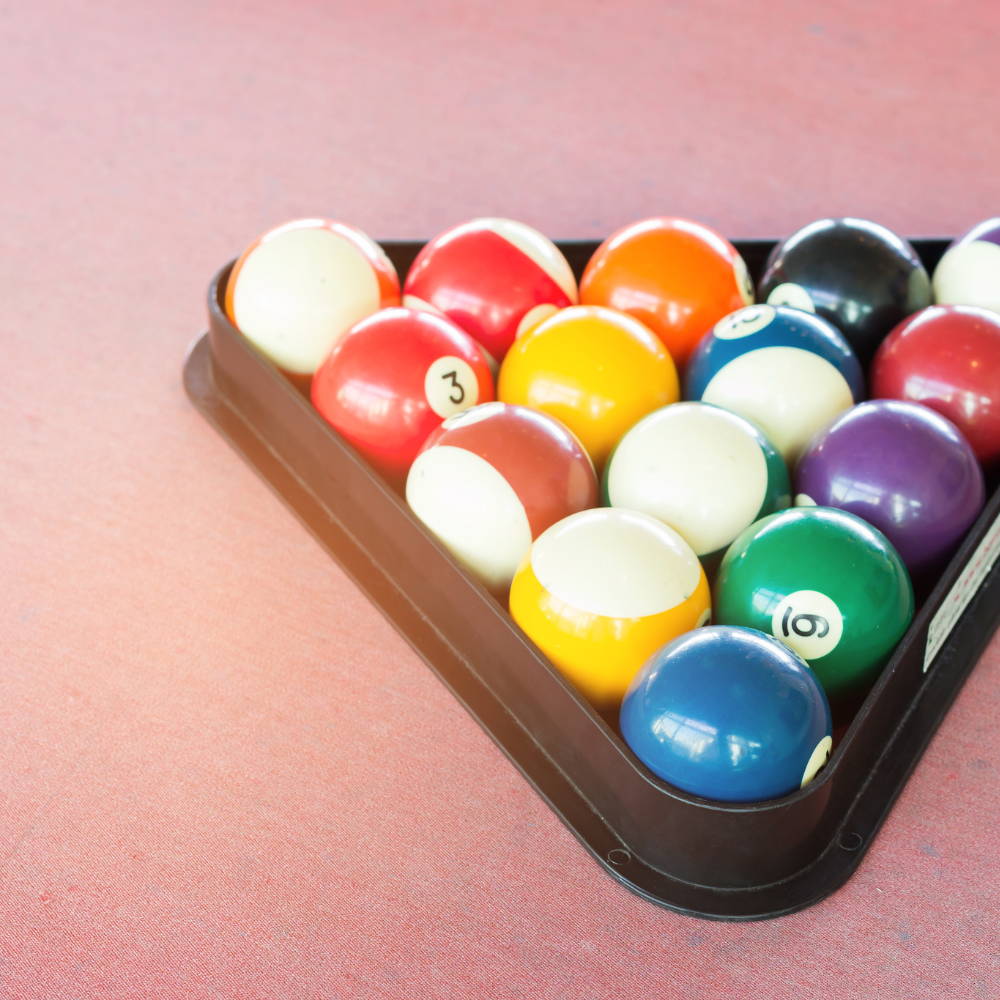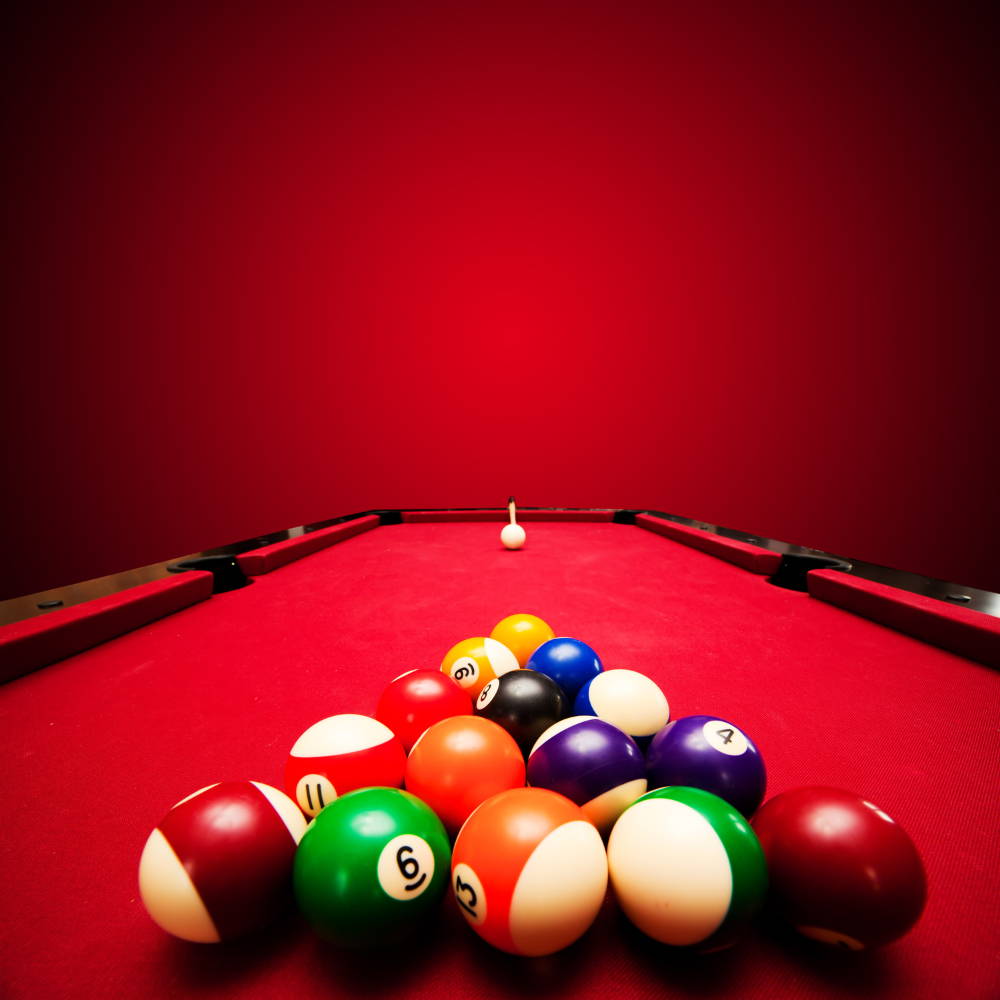From Wool to Synthetic: The Evolution of Pool Table Cloth
Historical Beginnings: Wool's Dominance
In the early days of cue sports, wool was the undisputed choice for pool table cloth. It was not merely a matter of preference but of availability. Wool, with its natural abundance and ease of processing, became the foundation for the game's first tables. The cloth, often called "felt" due to its texture, was dense, smooth, and provided a consistent playing surface. Its durability ensured that the balls rolled with minimal friction and predictable trajectories.
Wool's Limitations Emerge
While wool served the game adequately in its infancy, its limitations began to show as the game progressed and players sought more precision and speed. Wool, being a natural fiber, was prone to pilling and would wear down over time, especially in areas of frequent ball impact. Moreover, variations in manufacturing meant that the consistency of the cloth could vary, leading to unpredictable ball behaviors. Wool’s sensitivity to moisture also posed challenges, as the cloth could warp or stretch in varying humidities, impacting gameplay.

The Introduction of Napped Cloth
To address some of wool's limitations, manufacturers introduced napped cloth. While still primarily made of wool, this cloth underwent a process where the fibers were raised to create a smooth, velvety surface, similar to the nap on luxury fabrics like velvet or corduroy. This innovation provided a more consistent roll for the balls and extended the cloth's lifespan. However, the nap required regular brushing to maintain its direction and ensure uniformity across the table.
Synthetics Enter the Scene
The 20th century witnessed significant technological advancements, one of which was the development of synthetic fibers. Materials like nylon and polyester began to find their way into various products, and pool table cloth was no exception. These synthetic materials promised greater durability, resistance to moisture, and more consistent manufacturing standards than their natural counterparts. The smoother finish of synthetic cloths also meant reduced friction, allowing for faster ball speeds and a different style of play.
Blend of Tradition and Technology
As synthetics gained popularity, purists of the game remained attached to the traditional feel of wool. This led manufacturers to produce blended cloths, combining the best of both worlds. A mix of wool and synthetic fibers offered the familiar feel and texture of traditional woolen cloth but with the enhanced durability and consistency of synthetics. These hybrid cloths quickly became a favorite, catering to both traditionalists and modernists alike.
Today's Choices: A Spectrum of Options
Modern pool players are spoilt for choice when it comes to table cloth. From 100% woolen offerings that hark back to the game's roots to cutting-edge synthetic materials that promise unparalleled performance, there's a cloth for every preference and playstyle. Innovations in manufacturing have also introduced cloths with spill-resistant coatings, UV protection, and even customizable patterns and colors to match aesthetic preferences.
Future Horizons: Sustainable and Smart Cloths
The evolution of pool table cloth doesn't end with synthetics. As environmental concerns become paramount, manufacturers are exploring sustainable materials that have a lower environmental footprint. Hemp, bamboo, and recycled fibers are all being tested as potential materials for future cloths. Additionally, the era of smart technology could see the introduction of cloths embedded with sensors to analyze player performance, offer real-time feedback, or even digitally alter the table's surface markings.

A Tapestry of Time: Delving Deeper into Pool Table Cloth Evolution
The Aesthetics of Early Woolen Cloths
While wool was a functional choice for early pool tables, it also added a touch of luxury to the game. Billiard rooms in elite households and clubs were places of leisure and opulence. The green hue of the woolen cloth, reminiscent of the grassy outdoor lawns where cue sports found their origin, added to the ambiance. The dense texture and rich color of the wool not only ensured a consistent playing surface but also resonated with the grandeur of these settings.
The Role of Manufacturers and Industrialization
The shift from pure wool to napped cloth and then to synthetics didn't happen in isolation. The industrial revolution and the rise of textile manufacturing played significant roles. As factories began to produce cloth on a larger scale, innovations in production methods emerged. The ability to produce napped cloth consistently or to blend wool with emerging synthetic fibers became feasible due to advancements in machinery and textile technology.
Player Preferences and the Demand for Precision
The evolution of pool table cloth was also driven by the players' increasing demand for precision and consistency. As pool transitioned from a leisurely pastime to a competitive sport, the slightest irregularities in the cloth could dramatically impact gameplay. Championships were won or lost based on split-second decisions and millimeter-precise shots. In this high-stakes environment, the need for a reliable and predictable playing surface became paramount.
Regional Variations and Influences
Different regions had their unique preferences and influences when it came to pool table cloth. In Europe, for instance, the preference for wool persisted longer than in the Americas, where rapid industrialization made synthetic options popular sooner. Such regional variations added another layer to the tapestry of pool cloth evolution, as manufacturers tailored their offerings to cater to localized tastes and requirements.
Environmental Impacts and Modern Choices
With growing awareness of environmental sustainability, modern manufacturers face challenges their predecessors didn't. The production of synthetic fibers, while offering durability and precision, often involves processes detrimental to the environment. Modern manufacturers are now tasked with balancing performance and ecological responsibility. This has led to the exploration of alternative materials, efficient production methods, and even recycling initiatives to reduce the environmental footprint of pool table cloths.
Caring for the Cloth: A Testament to Its Importance
The care routines associated with pool table cloth further highlight its significance. From regular brushing of napped cloth to ensure uniform directionality to gentle cleaning of synthetic variants to maintain their sheen, maintaining the cloth's integrity is a ritual for serious players. These care routines, passed down through generations, are a testament to the cloth's integral role in the game.

Concluding Thoughts: An Ongoing Journey
The cloth draped over a pool table, often overlooked by casual observers, carries a rich history and is a testament to human ingenuity and adaptability. From humble woolen beginnings to the high-tech possibilities of the future, the evolution of pool table cloth mirrors the broader story of human progress. As players continue to seek perfection on the table, the quest for the perfect cloth, balancing tradition, performance, and innovation, will undoubtedly continue.
Are you looking for a Pool Table? check out our pool tables range Pool Tables





